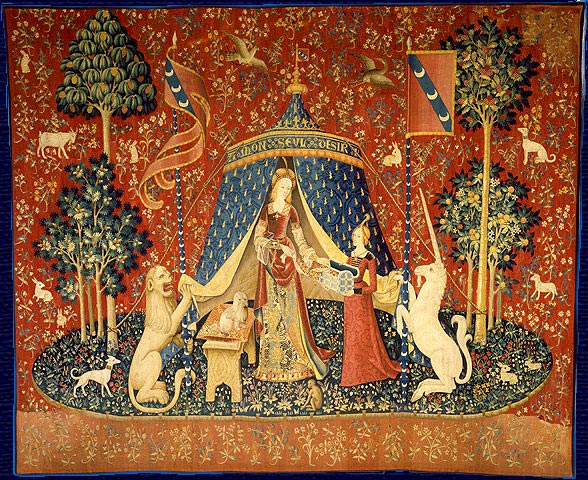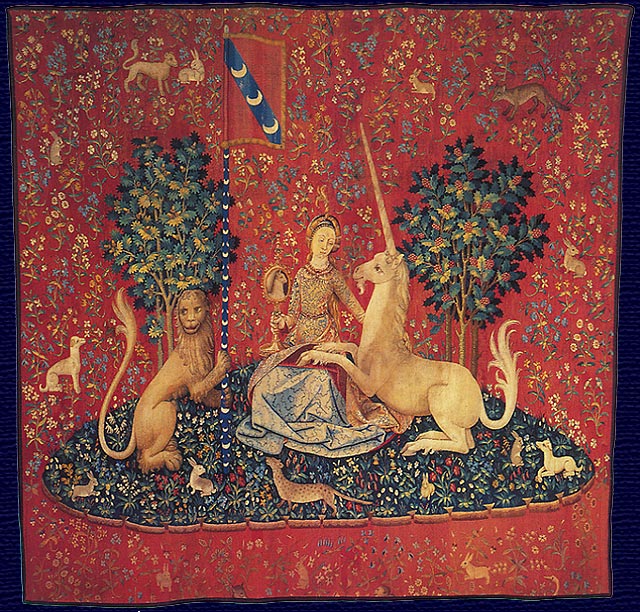‘Lady and the Unicorn’ Tapestries Return to France
After an absence of almost two years for cleaning and conservation, the world famous Lady and the Unicorn tapestries have gone back on view at the Musée National du Moyen Age, at Cluny in Paris. Their treatment was funded in part by the Japanese, in exchange for the tapestries travelling to Tokyo and Osaka last year.
Woven in wool and silk, the six tapestries, ranging from 9′ x 11’8″ to 12′ x 15′, depict a slender, blonde woman in a Mediterranean garden with a unicorn and a lion on either side. They were woven in Flanders in the early 1500s by unknown artisans — most likely at the behest of a wealthy family in Paris, but their subject remains mysterious. Along with the Unicorn Tapestries at the Metropolitan Museum of Art’s Cloisters, they are considered some of the finest examples of medieval weaving in the world.

Historians have suggested that five of the Lady and the Unicorn tapestries relate to the the five senses. In the new installation, they are hung in a softly lit, square room, progressing clockwise from the most earthly of the senses to the most heavenly: touch (in which the woman holds the unicorn’s horn and a flag); taste (in which the woman feeds a bird); smell (in which she holds flowers); hearing (in which she plays music); sight (in which she shows the unicorn his reflection in a mirror). Finally, the sixth tapestry includes text that reads, “A mon seul désir,” or “To my only desire.” It depicts the woman inside the parting folds of a tent, held open by the unicorn and the lion. Some historians believe it represents the heart, the sixth and innermost sense.

The tapestries have been a focal point of many stories. In the 19th Century, George Sand wrote about them in one of her novels. They also appear in The Notebooks of Malte Laurids Brigg, the 1910 novel by the poet Rainer Maria Rilke, who uses their trajectory from aristocratic home to public museum as an oblique backdrop to the social shifts of the era. More recently, Tracy Chevalier based her 2004 novel The Lady and the Unicorn on them.






























Comments [0] Sign in to comment